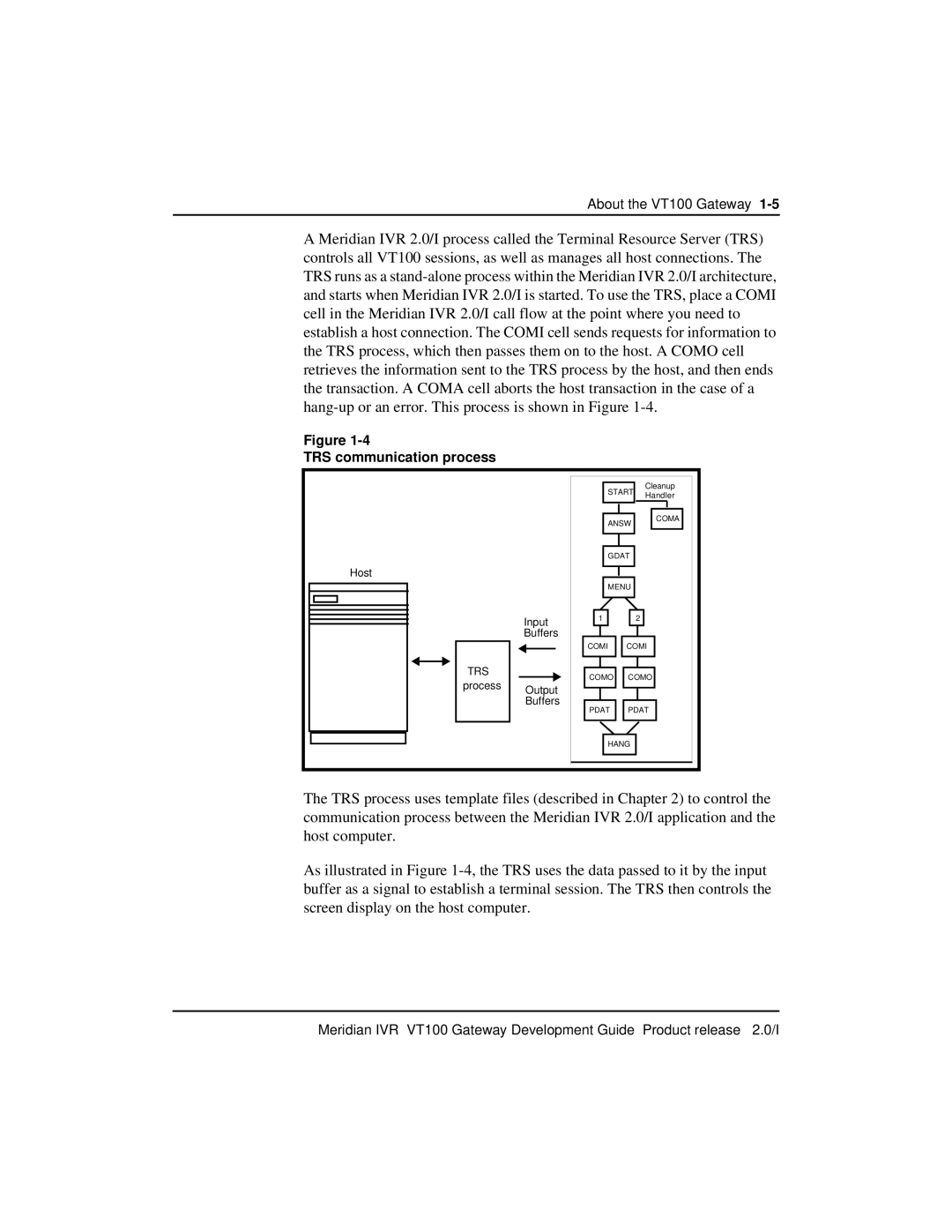
About the VT100 Gateway
A Meridian IVR 2.0/I process called the Terminal Resource Server (TRS) controls all VT100 sessions, as well as manages all host connections. The TRS runs as a
Figure
TRS communication process
|
| START | Cleanup | ||
|
| Handler | |||
|
|
|
| ||
|
| ANSW |
| COMA | |
|
|
|
| ||
|
| GDAT |
|
| |
Host |
|
|
|
|
|
|
| MENU |
|
| |
| Input | 1 |
| 2 |
|
|
|
|
|
| |
| Buffers |
|
|
|
|
|
| COMI | COMI |
| |
TRS |
| COMO | COMO |
| |
process |
|
| |||
Output |
|
|
|
| |
|
|
|
|
| |
| Buffers | PDAT | PDAT |
| |
|
|
| |||
|
| HANG |
|
| |
The TRS process uses template files (described in Chapter 2) to control the communication process between the Meridian IVR 2.0/I application and the host computer.
As illustrated in Figure
Meridian IVR VT100 Gateway Development Guide Product release 2.0/I
